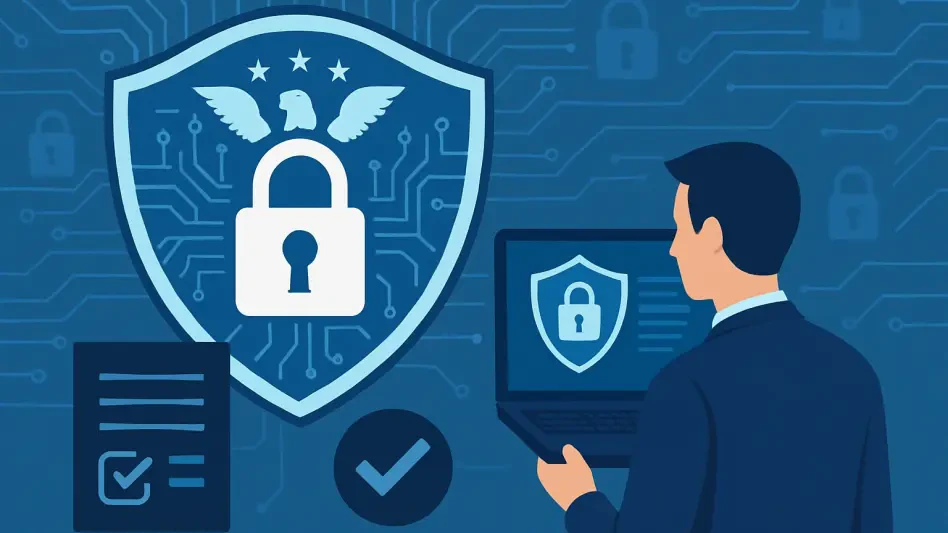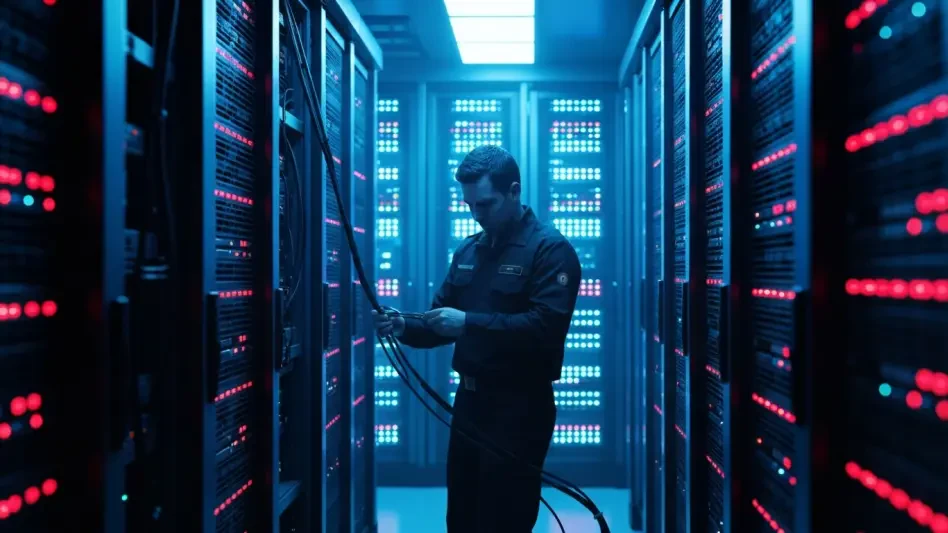In an era where cyber threats loom larger than ever, the Department of Defense (DoD) has taken a decisive step to safeguard sensitive data within its extensive supply chain, impacting contractors across various industries. The introduction of the Cybersecurity Maturity Model Certification (CMMC) marks a pivotal shift, establishing a rigorous framework to ensure that companies working with the DoD meet stringent security standards. This mandate is not merely a bureaucratic hurdle but a critical measure to protect Federal Contract Information (FCI) and other sensitive materials from increasingly sophisticated cyberattacks. For contractors, especially those in construction and related fields, understanding and adhering to these requirements is no longer optional but a fundamental necessity to remain competitive. This article delves into the significance of CMMC compliance, exploring its benefits, the obstacles it presents, and actionable strategies to achieve adherence in a landscape defined by digital risks.
Understanding the CMMC Framework
Foundations of Cybersecurity Standards
The CMMC framework, rolled out by the DoD, establishes a structured approach to cybersecurity with three distinct levels of certification, each building on the previous to ensure robust protection of sensitive information. As of this year, the initial phase of implementation focuses on Level 1, known as Foundational, which emphasizes basic safeguards for FCI through self-assessment processes. This level serves as the entry point for contractors, ensuring that even the smallest entities in the supply chain begin aligning with federal expectations. Importantly, the framework’s flow-down requirement means that compliance is mandatory not just for prime contractors but also for subcontractors and suppliers at every tier. This comprehensive scope underscores a shared responsibility across the DoD ecosystem, ensuring that projects ranging from infrastructure to defense systems are protected against digital vulnerabilities. For many firms, this represents a significant shift in operational priorities, placing cybersecurity at the forefront of contract eligibility.
Phased Implementation and Future Expectations
Looking ahead, the phased rollout of CMMC standards is set to span from now through 2028, with each stage introducing progressively stricter requirements that demand greater maturity in cybersecurity practices. As contractors move beyond the Foundational level, they will encounter more complex controls and third-party assessments, necessitating substantial investments in technology and training. This gradual escalation aims to balance immediate compliance needs with long-term capability building, allowing firms to adapt without overwhelming their resources. However, the timeline also signals an urgency for early preparation, as delays in meeting these standards could jeopardize current and future DoD contracts. For industries like construction, where federal projects often involve sensitive data, staying ahead of these evolving mandates is critical. The phased approach, while structured, serves as a reminder that cybersecurity is an ongoing journey rather than a one-time achievement, requiring sustained commitment across all operational levels.
Benefits and Challenges of Compliance
Unlocking Opportunities Through Adherence
Achieving CMMC compliance opens significant doors for contractors seeking to secure or retain DoD contracts, particularly in competitive sectors like construction where federal projects are a major revenue source. By meeting these cybersecurity standards, companies position themselves as trusted partners capable of handling sensitive information, distinguishing themselves from noncompliant competitors. Beyond government work, adherence to such rigorous standards can also appeal to private-sector clients who prioritize data security, thereby expanding market reach. Additionally, the implementation of CMMC controls helps mitigate risks like ransomware and data breaches, protecting firms from financial losses and reputational harm. This dual benefit—access to lucrative contracts and enhanced security—transforms compliance from a regulatory burden into a strategic asset, fostering resilience in an increasingly digital business environment where cyber threats are a constant concern.
Navigating the Roadblocks to Implementation
Despite the clear advantages, the path to CMMC compliance is fraught with challenges, especially for small- to medium-sized contractors who may lack the resources of larger firms. Many operate with outdated systems ill-equipped to meet modern cybersecurity demands, creating a technological gap that requires significant upgrades. Beyond infrastructure, organizational hurdles such as documenting policies, procedures, and evidence of implementation add layers of complexity to the process. Perhaps most daunting is the recognition that compliance is not a one-off task but a continuous effort involving regular system monitoring, security updates, and employee training. For firms with limited cybersecurity expertise, maintaining audit readiness can feel like an uphill battle. These obstacles highlight the need for strategic planning and resource allocation to bridge the gap between current capabilities and the stringent demands of the CMMC framework, ensuring long-term viability in the DoD supply chain.
Strategies for Achieving Compliance
Leveraging External Expertise for Success
For many contractors, particularly those in industries not traditionally focused on cybersecurity, partnering with specialized consultants offers a practical solution to navigate the complexities of CMMC compliance. Engaging firms with expertise in both cyber risk management and sector-specific challenges can streamline the process, providing tailored guidance on meeting DoD requirements efficiently. These external resources often offer outsourced IT services, helping to upgrade legacy systems and implement necessary controls without the need for extensive in-house capabilities. Such collaborations can also assist in developing comprehensive documentation and preparing for audits, reducing the burden on internal teams. By leveraging professional support, contractors can focus on their core operations while ensuring alignment with federal standards, turning a daunting regulatory mandate into a manageable and structured process that supports business growth.
Building a Culture of Continuous Improvement
Beyond external assistance, fostering an internal culture that prioritizes cybersecurity is essential for sustaining CMMC compliance over the long term. This involves regular training programs to keep employees informed about evolving threats and best practices, ensuring that security becomes an integral part of daily operations. Additionally, establishing protocols for continuous monitoring and periodic system updates helps maintain readiness for audits and adapts to new requirements as they emerge. Contractors must view cybersecurity not as a static checkbox but as a dynamic priority that evolves with technological advancements and threat landscapes. By embedding these practices into organizational workflows, firms can mitigate risks proactively and demonstrate a commitment to protecting sensitive data. This cultural shift, while challenging to implement initially, ultimately fortifies businesses against cyber vulnerabilities and solidifies their standing within the competitive DoD contracting environment.
Closing Thoughts on Cybersecurity Mandates
Reflecting on the journey of CMMC compliance, it becomes evident that contractors who embrace these standards early gain a distinct advantage in securing DoD contracts while bolstering their defenses against cyber threats. The rigorous framework, though demanding, provides a structured path to enhance security practices across the supply chain, ensuring that sensitive data remains protected even as digital risks escalate. Challenges such as outdated systems and ongoing maintenance demands test the resolve of many firms, yet those who persevere often find that compliance reshapes their operational resilience. Moving forward, contractors should prioritize proactive investments in technology and training, while considering partnerships with specialized advisors to ease the transition. Embracing a mindset of continuous improvement will be key to navigating future phases of the rollout, ensuring that cybersecurity remains a cornerstone of business strategy in an ever-evolving threat landscape.








